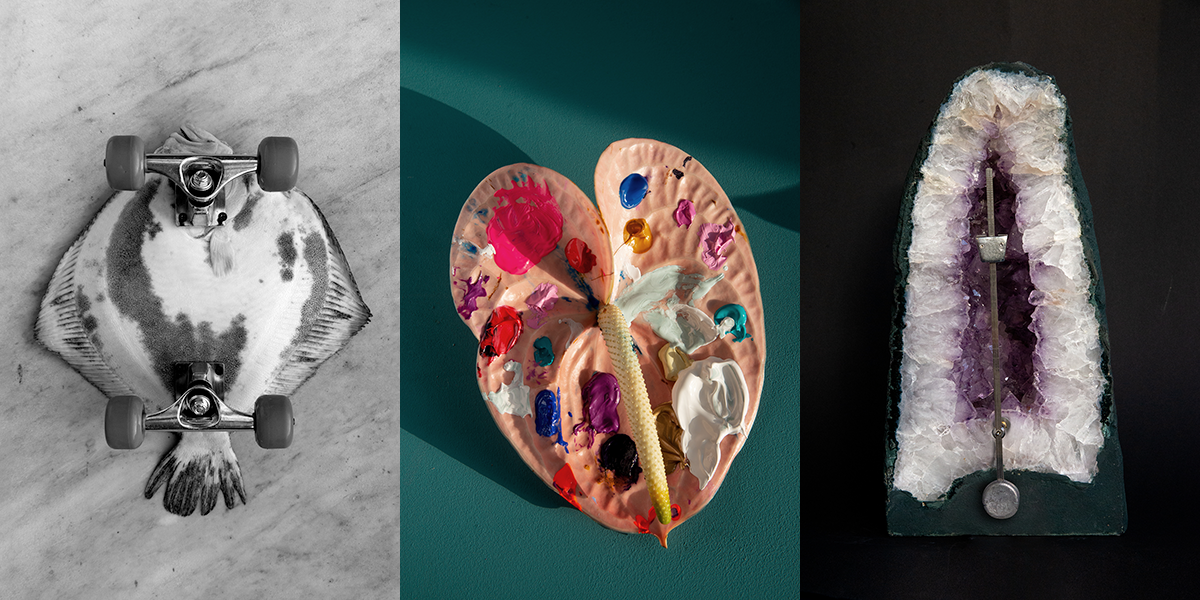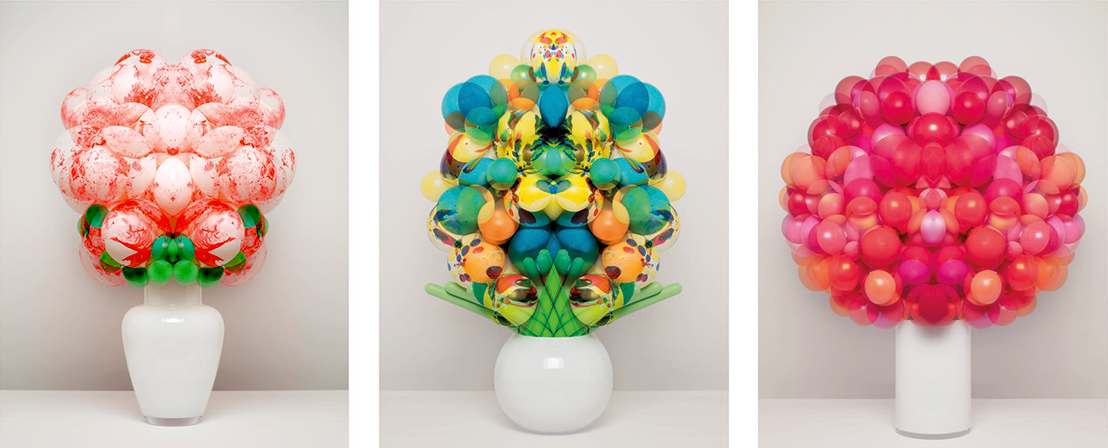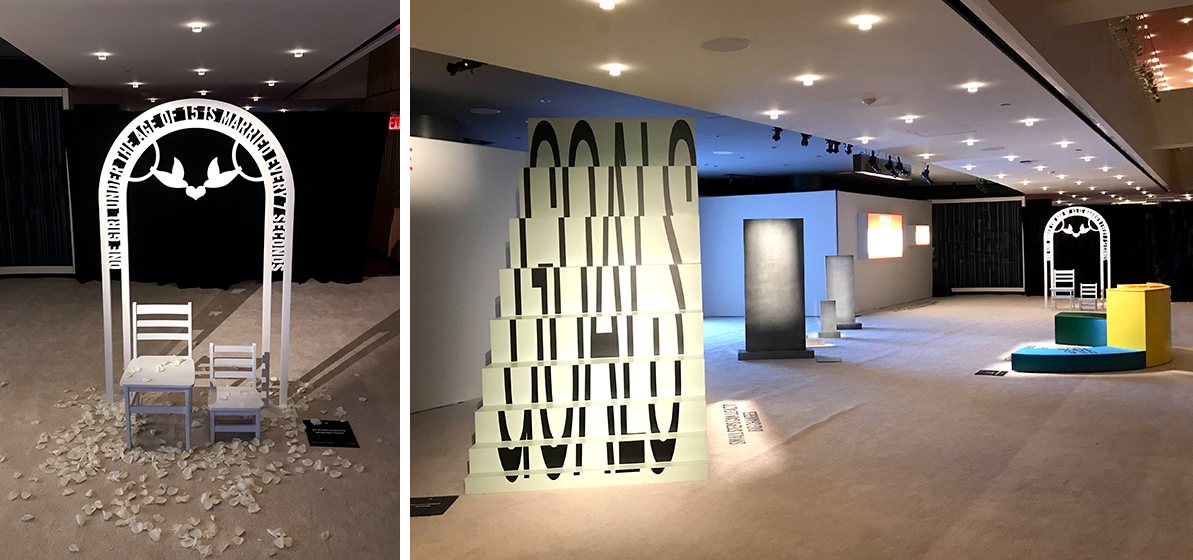
A series of photographs presenting analog objects made from collected, natural materials. Left to right: Skate, Palette, Metronome
Sarah Illenberger was born and raised in Berlin and studied graphic design at Central Saint Martins. She started her career as an art director for magazines and now runs her own Berlin-based studio practice. Her wide-ranging work, notable for its elegance and sense of humour, encompasses 3D installation, photography, sculpture, and set design for such clients as Hermès, Nike, and the New York Times. Jordan MacInnis talked to Sarah about her expansive career.
Jordan MacInnis: Your work reimagines everyday items in funny and seemingly spontaneous ways. Are there any rules you create for yourself while working?
Sarah Illenberger: I try not to copy myself or anyone else but obviously there’s always a starting point, a seed. It’s usually something that already exists but the process and the challenge is to get away from that. Sometimes advertising clients see something and then ask for the exact same thing. That’s really boring. So the rule is to surprise myself. If I don’t get excited then nobody is going to get excited—I can’t bullshit myself. You have to be honest, even though you have deadlines and can find excuses to live with something that is not as original as it could be. Honesty is important.
One other rule: sometimes when I’ve finished something, or I come up with an idea, I usually think that somebody must have done it already. If it has been done then I have to put it in the bin. But in most cases the fact that it hasn’t been done is the sign that it’s going to be successful, because the idea is so obvious. With the Flowerworks series, for example, the Japanese expression for fireworks is hanabi which means fire flower. But nobody had taken flowers and put them into firework form and photographed them in front of a black background.

In collaboration with Marsano Blumen, Sarah created "Solid Air," a series of flower bouquets made from balloons.
JMI: Is there a set of questions that you bring to each project?
SI: The thing I always ask about an object is what it reminds me of. What does this look like? What could this be? I always try to find parallels between different universes. I see something that comes from food and translate it into something from a different world. I go into a brush-making studio and I see the brushes accidentally turned around and then they jump out at me and they tell me that they’re flowers.
People’s reaction to my work is often, ‘Why did she see that and why didn’t I? I’ve been looking at this thing for the past twenty years.’ I think this is why people feel intrigued by my work. It surprises people because they are in contact with these objects and haven’t discovered it for themselves.
My wish would be to go even deeper with the work, to be able to evoke more emotion. To take something that is thought-provoking but to express it with simple and humorous visual language, and to find the right symbols to tackle even bigger issues. Often the heavier the theme the lighter the execution the more interesting and dynamic the work becomes.
JMI: Is avoiding cliché important?
SI: I actually don’t mind cliché, it can be quite helpful. The word cliché comes from printing, it’s the flat surface that prints are made from. Cliché also means ‘master’ in French. So I try to take something familiar, something that people have an association with, and to turn it into something special. I realized recently that being on social media too much doesn’t help with being free and open and that it’s difficult to stay away from things that have already been done. I think giving one’s self time, and lots of digital free time, is important.
I try to take something familiar, something that people have an association with, and to turn it into something special.
On the other hand I like Instagram a lot. Work that’s not totally refined and finished lands there. It’s a nice in-between space between my own sketchbook and professional work and I can output a lot of ideas without having to carry them them around. It’s like a creative diary, but it’s not too personal. I don’t like it when Instagram becomes too private.

The Bill & Melinda Gates Foundation and Richard Curtis/Project Everyone organized a conference in NYC and invited Sarah to transform the most important data into three-dimensional installations. They focused on themes such as Malaria, Female Empowerment, Child Marriage and Poverty.
JMI: On that note, what makes for a productive, or unproductive, conversation about art and design?”
SI: I really hate the question ‘Where do you find your inspiration?’ I have been asked that a hundred times.
JMI: Are there other places where you do see good design or other fields that you look to for ideas?
SI: I’m looking back quite a lot at the moment, at literature and music, and at Leonard Cohen and Joni Mitchell and their lyrics. Female voices also interest me. I’m super happy that so many older female artists like Mary Baumeister and Carmen Herrera are finally getting fame and recognition. They were forgotten but now museums are making space for them.

